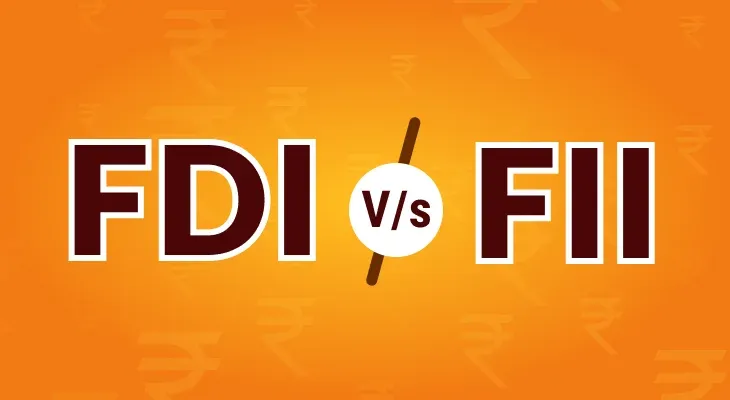
What is Swaption and its Types
The segment of financial derivatives offers a wide range of instruments for managing risks and optimising investment strategies. One such instrument is a swaption, which provides traders and investors with the flexibility to enter into or exit a swap agreement. If you’re interested in trading derivatives, then read on to understand the concept of swaptions, their types, applications, and explore how they can be utilised in the financial markets.
Understanding Swaps
Before diving into swaptions, it's essential to have a basic understanding of swaps. Swaps are financial contracts where two parties agree to exchange cash flows based on predetermined terms. These cash flows can be tied to interest rates, currencies, or other underlying assets. Swaps are commonly used for hedging against interest rate fluctuations, managing cash flows, or speculating on market movements.
Swaptions: A Closer Look
A swaption is a type of derivative contract that gives the holder the option to enter into a swap agreement at a future date. It is important to note that swaption is a ‘swap option’ and not an obligation for the holder. It provides the holder with the flexibility to choose whether to enter into the swap or not, depending on market conditions. It can occur in two forms, namely:
Payer Swaption
In this type of swaption, the holder gets the right to enter into a swap where they pay the fixed interest rate and receive the floating interest rate. This type of swaption is beneficial when the holder believes that interest rates will rise, as it allows them to secure a fixed rate in the future.
Receiver Swaption
In the case of a receiver swaption, the holder has the right to enter into a swap where they receive the fixed interest rate and pay the floating interest rate. This type of swaption is useful when the holder expects interest rates to fall, as it allows them to benefit from a future lower fixed rate.
Swaption Types
Swaptions can be classified based on various criteria. Some common types include:
European Swaption
A European swaption can only be exercised on a specific date known as the exercise date. The holder of a European swaption must wait until the exercise date to decide whether to enter into the swap or not. European swaptions are commonly used in fixed-to-floating interest rate swaps, where the fixed-rate payer has the option to enter into the swap on the exercise date. This style of swaption provides a clear exercise period and is often used for longer-term hedging strategies.
American Swaption
An American swaption provides the holder with the flexibility to exercise the option at any time before the expiration date. This gives the holder more control and the ability to time their entry into the swap based on market conditions. American swaptions are particularly useful in dynamic market environments where interest rates may fluctuate significantly. They allow the holder to take advantage of favourable interest rate movements by exercising the swaption early. This type of swaption is commonly used in interest rate swaps, where the floating-rate payer has the option to enter into the swap at any point during the life of the swaption.
Bermudan Swaption
A Bermudan swaption allows the holder to exercise the option on specified dates during the contract's life, offering a combination of features from both European and American swaptions. The exercise dates are predetermined and known in advance, providing a certain level of flexibility. This type of swaption is popular in interest rate swaps and provides the holder with the opportunity to enter into the swap at specific points during the life of the swaption. Bermudan swaptions are advantageous when the holder wants to evaluate the prevailing market conditions at different intervals before making a decision.
Cash-Settled Swaption
In addition to exercise style, swaptions can also differ in terms of settlement. A cash-settled swaption is settled in cash rather than through the physical exchange of the underlying swap. The settlement amount is based on the difference between the fixed and floating rates and the notional amount specified in the swaption contract. Cash settlement eliminates the need for the holder to enter into the swap physically, making it more convenient and efficient for certain market participants.
Physical-Settled Swaption
On the other hand, a physical-settled swaption involves the actual exchange of the underlying swap if the option is exercised. In this case, the parties enter into the swap contract, and the cash flows are exchanged as per the agreed terms. Physical settlement is common in longer-term interest rate swaps, where the parties have a long-term commitment and prefer the certainty and contractual obligations associated with the physical exchange.
Swaption Applications
Swaptions are utilised in various financial scenarios, including:
Managing Interest Rate Risk
Swaptions allow market participants to manage interest rate risk by providing the flexibility to enter into or exit a swap agreement based on their outlook on future interest rate movements. For example, a company with a floating-rate loan may use a swaption to hedge against a potential increase in interest rates by securing a fixed rate swap.
Structuring Flexible Financing
Corporations can use swaptions to structure flexible financing arrangements, enabling them to convert variable-rate debt into fixed-rate debt or vice versa, depending on market conditions. This flexibility helps them align their debt structure with their financial objectives and risk tolerance.
Portfolio Optimisation
Swaptions can be employed in portfolio optimization strategies, allowing investors to fine-tune their exposure to interest rates and optimise their risk-return profile. By adjusting the mix of fixed and floating rate instruments in their portfolio through swaptions, investors can align their investments with their market expectations and risk preferences.
Final Thoughts
Swaptions are powerful instruments that provide market participants with flexibility and risk management capabilities in the world of derivatives. By understanding the concept of swaptions, their types, and applications, investors and traders can make informed decisions and navigate the complexities of the financial markets more effectively.
FAQ
What are the key differences between a swaption and a swap?
A swaption is an option to enter into a swap, while a swap is a binding agreement to exchange cash flows based on predetermined terms. Swaptions provide flexibility, allowing the holder to choose whether to enter into the swap or not.
Can swaptions be traded on exchanges?
Yes, swaptions can be traded on exchanges, providing market participants with liquidity and standardised contract terms. Exchange-traded swaptions offer ease of trading and transparent pricing.
Are swaptions commonly used by individual investors?
Swaptions are more commonly utilised by institutional investors, hedge funds, and sophisticated market participants due to their complexity and risk profile. Individual investors typically have limited access to these instruments.
How are swaptions priced?
Swaptions are priced using sophisticated mathematical models, taking into account factors such as interest rates, volatility, time to expiration, and contract specifications. The pricing process involves estimating future cash flows and discounting them to present value.
Can swaptions be used for speculative purposes?
Yes, swaptions can be used for speculative purposes, allowing traders to profit from anticipated interest rate movements or changes in market conditions. However, it is important to note that speculating with swaptions involves risks and requires a deep understanding of the market dynamics.


